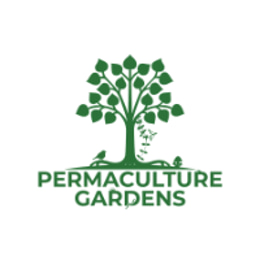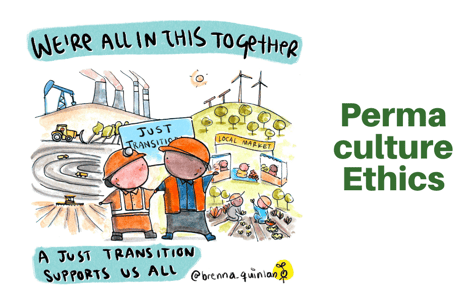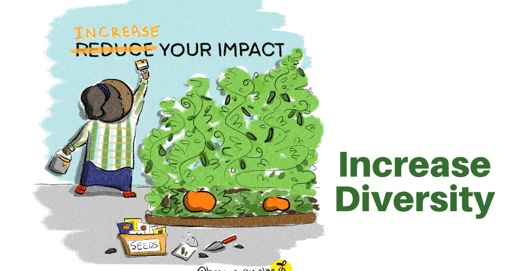Building Diversity in Your Garden
Discover the power of diversity in your garden! Learn how biodiversity strengthens resilience, reduces pests, and improves soil health. Explore practical tips for growing heirloom seeds, companion planting, and fostering a thriving ecosystem. Build a balanced garden and community today!
2/13/202511 min read
Building Diversity
in Your Garden
Disclaimer
This Building Diversity in Your Garden post contains some affiliate links. The small commission we receive if you choose to purchase goes towards making this gardening education available for free! We do not affiliate for anything we do not personally use. Thanks so much for your support!
Click the video above for the audio/visual version

Building Diversity
in your permaculture garden
In this blog, we’ll explore how to increase biodiversity in your garden and life, including:
Why Garden Diversity Important
Screens vs. Greens
Community Diversity & Resilience
A Diverse Community is a Strong Community
Homeowner’s Associations & the Challenge of Diversity
Practical Ways to Increase Diversity in Your Garden
Fill in the Gaps
Watch the Weeds
Balance Your Harvest
Final Thoughts: How Will You Use and Value Diversity?
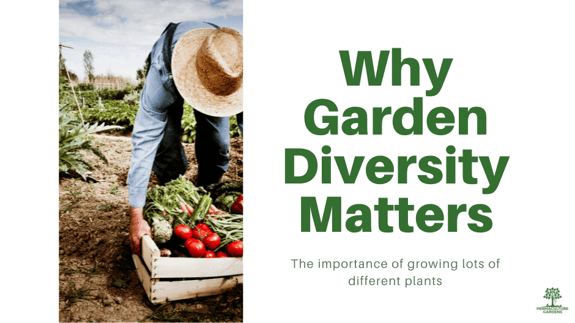

1. Why Garden Diversity is Important
God was certainly not a minimalist when He created the Universe. The sheer abundance of plant species, animals, and ecosystems is a testament to the beauty and necessity of diversity. A garden that embraces biodiversity reflects this natural balance, promoting resilience, sustainability, and abundance.
Nature depends on the different functions that plants, animals, fungi, etc bring, and when we imitate the principle of biodiversity, we create gardens that are healthier, more productive, and more resilient against pests, diseases and climate change.
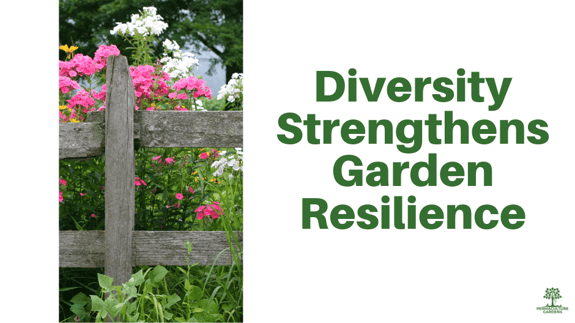

2. Garden Diversity Strengthens Garden Resilence
Every plant has pests that naturally feed on it. When you plant a single crop (monoculture), pests thrive because they have an unlimited food source. Without the variedness of polyculture, pest populations can explode, leading to a devastated harvest.
But if we intercropped our prized crops, say you have a large tomato patch. Plant it with basil and marigolds, and we can introduce beneficial insects that could eat tomato pests such as the tomato hornworm.
Supporting Our Ecosystem's Vulnerable Species
From diversity also emerges highly-specialized animals that create relationships with a specific type of plant.
Certain butterflies, like zebra swallowtails, rely exclusively on the pawpaw (Note: The Pawpaw (Asmina triloba) is the largest native American fruit). So if you take this tree away, you will inevitably kill a population of butterflies.
Monarch butterflies on the other hand are known to lay eggs specifically on milkweed.
From the Indiana Department of Natural Resources:
The female monarch butterfly will lay her eggs on the underside of the milkweed leaves, which provide protection for the developing larvae. The large leaves act like umbrellas, shading the eggs from too much summer sun and sheltering them during strong rainstorms. The leaves also offer an excellent hiding spot from predators that may want to eat the eggs before the larva emerges.
When the larvae hatch, they will begin to munch on the leaves of the milkweed plants, eating day and night for the first few days of life. On the first day, the larva may eat as much as its own weight in food!
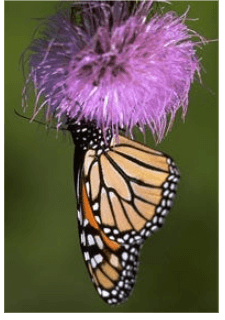

Recent research, promoted by entomologists and author Nancy Lawson, found that monarchs also seek out pyrrolizidine alkaloids (PAs) from plants like boneset (Eupatorium serotinum) to defend against predators—showing even the butterflies diversify their food sources!
By growing a variety of plants, you:
✅ Reduce pest infestations
✅ Support vulnerable species of insects
✅ Attract beneficial insects that control harmful pests naturally
“You don’t have a mosquito problem, you have a lack of dragonfly problem.” — Geoff Lawton
Want an easy way to ensure biodiversity in your garden?
Our SAGE App helps you check plant family diversity, balance companion planting, and create a resilient permaculture garden.
Prevent monoculture mistakes
Improve soil health naturally
Maximize your harvest with diverse crops
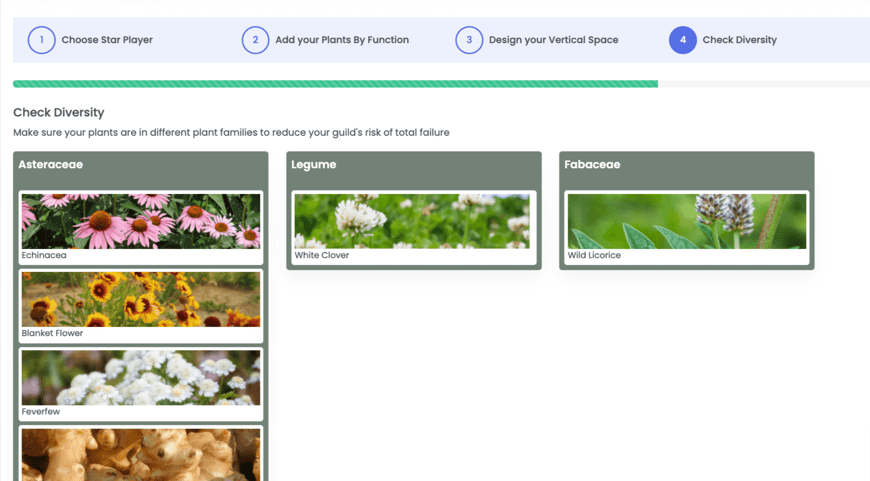

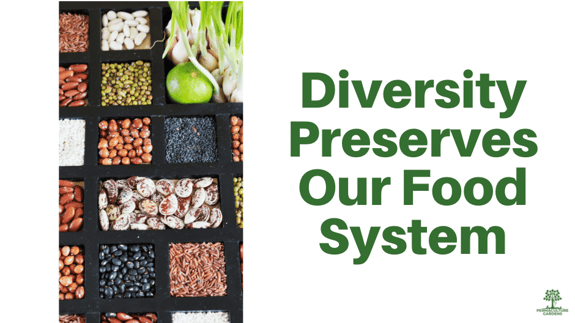

3. Diversity Preserves Our Food System
Did you know that 94% of seed diversity has disappeared?
- “SEED: The Untold Story”


There are around 7,500 varieties of apples around the world, about 2,500 of which are grown in the United States.
You can find only 100 of these apples in commercial markets today. And I bet if you walked into your typical grocery store, you would find perhaps a handful of these varieties: Fuji, Red Delicious, Green Delicious, MacIntosh.
How many different apple varieties can you name?
The same pattern holds true for lettuce, cabbage, and other staple crops.
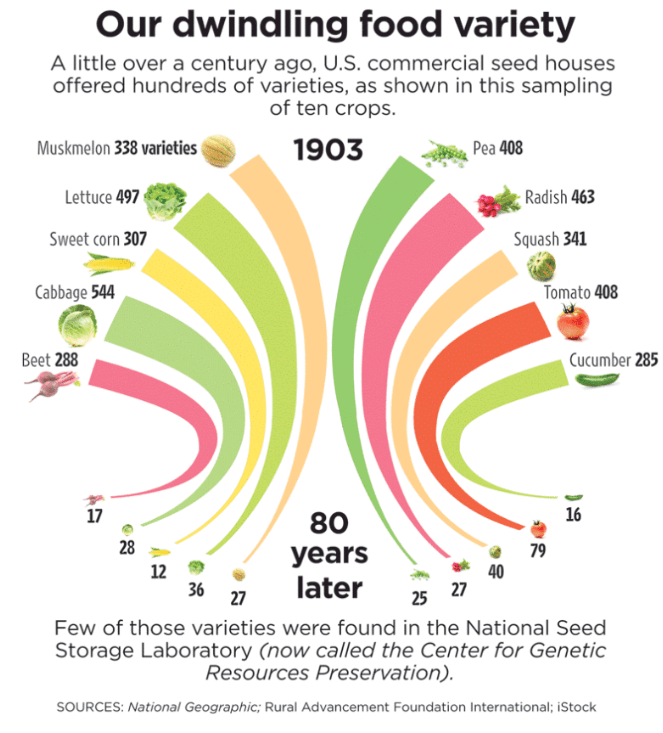

The example of the infographic above shows us that where we originally had 497 varieties of lettuce 80 years ago, we now have 36.
It reveals that 544 cabbages are now down to 28.
These are startling numbers with repercussions on the food system that we are experiencing today.
Heirloom varieties (those with a history of having been handed down from generation to generation) are:
Quickly disappearing and together with them are the stories behind the people who have stewarded them over several generations. They are often poignant tales of travel and hope stored in seeds.
Plants from which you can harvest seeds and plant again, unlike commercial hybrid varieties.
Rich in flavor and features
Sometimes are even more disease and pest-resistant than hybrids.
And all of this comes from looking merely at the diversity of seeds.
By growing heirloom and open-pollinated varieties, we protect biodiversity and ensure future generations have access to a wide range of nutritious, resilient crops.
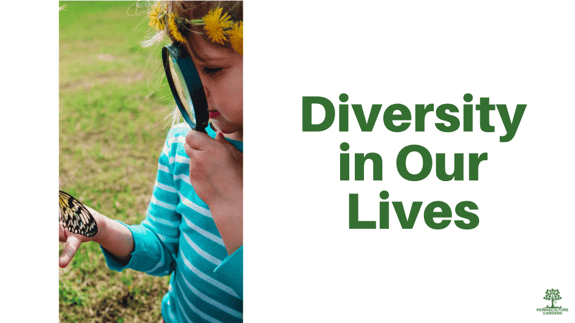

4. Diversity in Our Lives
Just as a balanced garden thrives, so does a balanced life.
Screens vs. Greens
Post-pandemic, screen time has skyrocketed. In our household, our kids are on computers a lot more than ever before. We try to battle this by encouraging them to do their schoolwork outdoors and using pen and paper, notebooks, and analog ways of keeping busy.
We try to keep this balance ourselves by turning off devices at set times. We did not evolve to be always on screens. One of the consequences of being constantly on screens is the rise in cases of “dry eye symptom,” a condition that once only affected post-menopausal women. In recent years, doctors are seeing “dry eye” in kids as young as five years old.
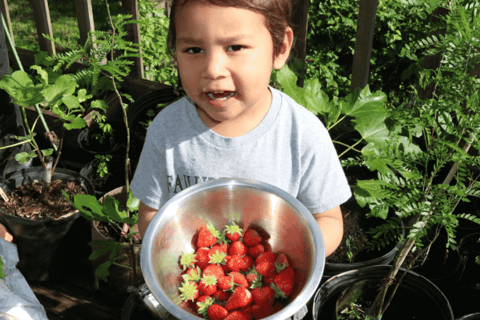

On the other hand, people are now encouraged to “forest bathe” for health reasons. This term would not have come into existence unless we were exploring our natural environments as often as we look at screens.
It’s important to ask ourselves, “How does seeing only one kind of reality makes us live richer lives?”
We are made for the infinite to live in us.
We are naturally creative and diverse in our art forms. How can any creator or artist be limited to drawing the same painting every day?
Wouldn’t this be antithetical and soul-sucking?
We need nature just as much as our garden plants do.
Encourage time outdoors by:
Studying, reading, or journaling in nature
Taking walks without devices
Gardening as a form of therapy and connection
5. Community Diversity & Resilience
Homeowner’s Associations and Community
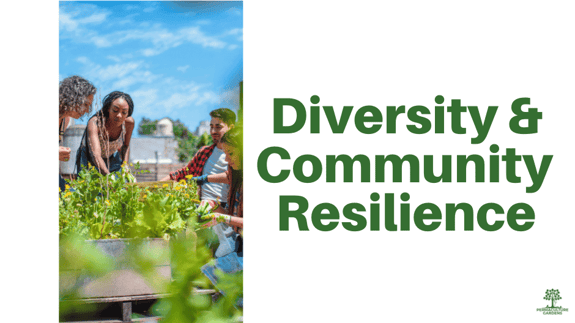

Just as the zebra swallowtail depends on the pawpaw, we depend on our neighbors, relatives, and friends.
When I was living in a tiny townhouse, I found Elisha, an African-American single mom who was kind enough to take my children to school when I was running late on schedule, was also grateful to me when I could take her girls to school when our roles are reversed. She even offered me toilet paper during the quarantine! I offered her veggies from our garden.
Russian-born, Tatiana, and her Jamaican husband, Godfrey, generously exchanged their bakery’s croissants for our lettuce in the spring. We were only too happy because… check out Godfrey’s Bakery Café in Falls Church, VA—their pastries are incredible!
Aklima, a Bangladeshi grandmother who didn’t speak English, spoke to me in the language of plants and seeds that we traded across our garden fence.
(Her squashes never get attacked by the squash borers, by the way.)
Our choice to live in a diverse neighborhood is deliberate. We are each of us different. Some of us have just arrived from foreign countries and settled in the US. Some of us do not speak English. Some have lived in the area for several years.
We thrive when we share.
Friends and relatives often remarked that we needed to move out of our tiny townhome. But all we really wished for was a bigger garden, the same diversity and no Homeowner’s Association (HOA). Guess what? We ended up moving to a 3-acre farm with no HOA in the end. I always praise God for this family miracle move. And we are hoping to build a community where we are today.
A Diverse Community is a Strong Community
The HOA is, unfortunately, the entity that seems to want to make each, unique home in our then village, the exact, same home. They would like to see the same water-hogging lawn in front of the house and allow doors painted only in specific colors.
Our HOA sent us a warning letter every year telling us to move our front garden or risk a fine. As a result, we felt constrained to act, to grow, and to live.
I believe Homeowner’s Associations have the power to be such incredible forces of good. I have heard of HOAs that promote compost collection and community gardens. One of our GIY Members, Andrea in Texas became head of their HOA Board where, with her cheerful and kind disposition she unites the neighborhood rather than divides it. She cultivates her own homegrown garden and encourages others to with her good example.
But in other HOAs where the laws that restrict front yard gardens to maintain a uniform look on all properties do not promote diversity at all. They perpetuate the thinking that being the same is good. And being different is bad.
A few years ago, I explained this to them in a letter, asking them to allow us to continue growing food in our front yard as it helped the entire community. But it seemed as if it was not as important as the letter of the law in their eyes.
I depend on my neighbors for fruit that I cannot raise on my own. I rely on them for dates, for seeds, for a truck when I need to haul big cattle fences to shape into trellises. And they, in turn, depend on me.
6. Social Permaculture: Living the Ethics of Diversity
Permaculture follows three core ethics:
Earth Care – Protect and regenerate natural systems.
People Care – Foster relationships and community.
Fair Share – Redistribute surplus for collective benefit.
Matt Powers, of thepermaculturestudent.com, recently sent out a video on how to live out these permaculture ethics in society. He proposed doing so with a set of standards for living. Some of the criteria he used which I found helpful are listed below:
Set clear boundaries
Magnify the solutions, not the problems
Meet people where they are
Put family first because they are the foundations of society
Work first on what matters now
Always innovate and adapt
Don’t take offense. Be better
Involve and inspire young people
Listen and learn from elders
He also reminded us that the third ethic, Fair Share (to redistribute surplus so that everyone has their fair share), is a product of the first two ethics, Earth Care and People Care.
In my neighborhood, I could choose to ignore my neighbors and live on my own terms, but that would not be very ethical. In fact, it would not be a very human thing to do.
The genuine human response is connection.
We can choose to ignore the acts of violence that are happening in our societies. But that is not a human response.
The human response should be a personal examination of conscience and the follow-through to act with love.
Let us welcome diversity even when expressing this love.
Writing this article is one way I have responded to the unjust, inhumane treatment of a human person, by another human person, each of them made in the image and likeness of God.
Perhaps you have a different way of showing love during a time of crisis.
How can you use and value diversity in your garden and your life? How can you personally act to positively and constructively buildup your community?
7. Practical Ways to Increase Diversity in Your Garden
Root crops like potatoes, garlic, and carrots add another layer without taking up space above ground.
Commercial farm operations might benefit from having nice straight rows with plenty of space in between (for driving harvesters and mechanized equipment), but our square-foot gardens don’t have similar requirements.
Choose from the list below of easy-to-grow pollinators, dynamic accumulators, and medicinal/culinary herbs, and plant them anywhere where you see gaps or holes in your garden beds.
These plants have useful support functions but will also increase the diversity of your garden automatically. Note: This is by no means an exhaustive list, please feel free to add more “gap fillers” in the plant lists that you create.
Fill in the Gaps
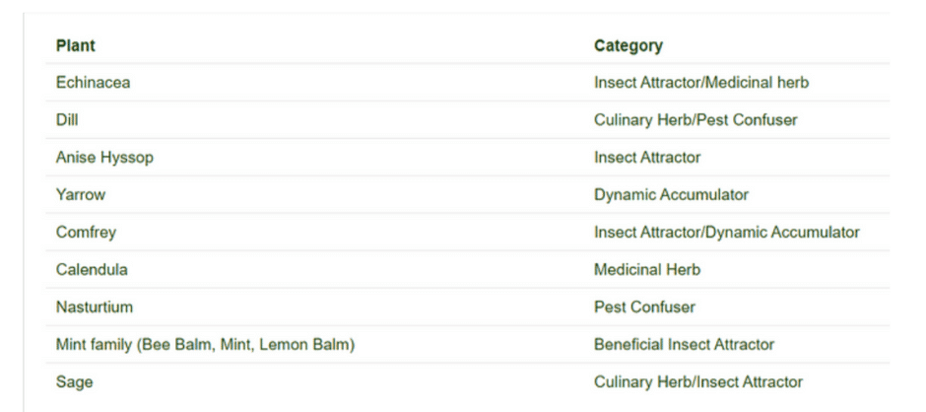

Watch the Weeds
Weeds indicate soil health. Some provide natural mulch, fertilizer, and aeration.
Observing what kinds of weeds grow in your garden beds can give you some important tips about the type of soil you have and what kind of minerals are in the soil. some weeds are extremely efficient at dredging up these nutrients. Of course, we do not want an entire garden bed filled with dandelion. But it’s better to have some weed growing there than to have your soil bare and exposed to the elements. Living soil needs living roots in it.
The table below will help to guide which “companion” plants might grow extremely well next to them. Remember, if managed properly, most weeds can provide us with free mulch, fertilizer, and soil aeration.
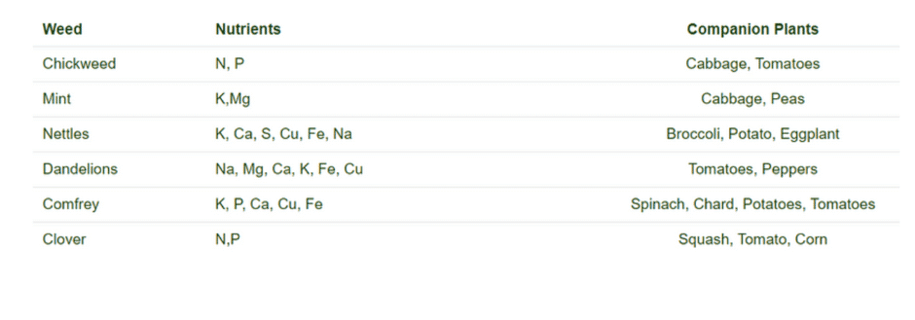

Balance Your Harvest
In very small gardens, there is a trick I’ve started using to simplify incorporating what in permaculture we call a “7-layer food forest.” More on that in this blog.
I just focus on three different layers; fruiting crops, ground-cover/leafy greens, and root crops.
Group plants into:
Fruiting crops (tomatoes, cucumbers)
Leafy greens (lettuce, kale)
Root crops (carrots, beets)
Try to balance out the number of plants you grow in each category. It’s a simple way to take advantage of the different levels at which crops grow and increase the diversity of your crops at the same time.
8. FAQs on Garden Diversity
Why is diversity important in gardening?
Diversity prevents pest infestations, improves soil health, and increases drought resilience in the face of climate change. The more diverse your system, the more redundant functions the elements in your garden have, the more stable it becomes.
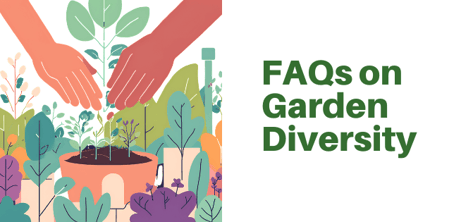

How can I increase biodiversity in my small garden?
Use vertical gardening, intercropping, and plant native flowers for pollinators. See above for more details!
What are some easy-to-grow heirloom varieties?
Try Brandywine and Purple Cherokee tomatoes, Forellenschluss lettuce, Tokyo Bekana cabbage, Alabama Blue collards, Tromboncino rampicante zucchini, and/or Blue Hubbard squash. These are some of our favorites to grow each year.
9. Choose Your Next Step
Diversity is the key to resilient gardens, strong communities, and balanced lives. Choose one thing that you can implement from the ideas above.
Will you be growing more pollinator plants?
Will you ignore some of the weeds?
Will you share some extra zucchini with a neighbor or friend?
Or something else?
Need some help deciding?
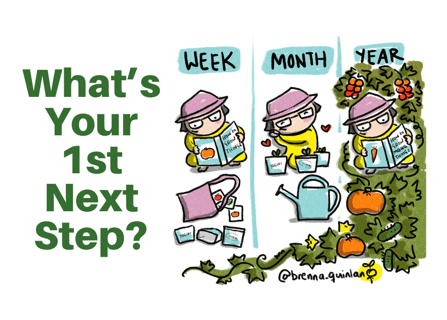

I WANT TO GROW MORE
Sign Up for a
Permaculture Garden Course
I AM A BEGINNER
I WANT MY DREAM GARDEN
Sign up for the
Grow-It-Yourself Program
Everything you need to start a garden
may be hidden in your pantry.
Take a self-paced, step-by-step garden course to help you grow right from seed to harvest.
Make Your Organic Food Garden A Reality with
a garden mentor
a community
an app &
a proven plan!


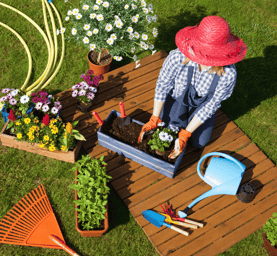



Choose one next step.
Which of the following are you?
Permaculture Gardens - your online resource for organic & sustainable gardens.
Contact
permaculturegardens@gmail.com
Bethany Farm
41558 Stumptown Rd.,
Leesburg, VA 20176
